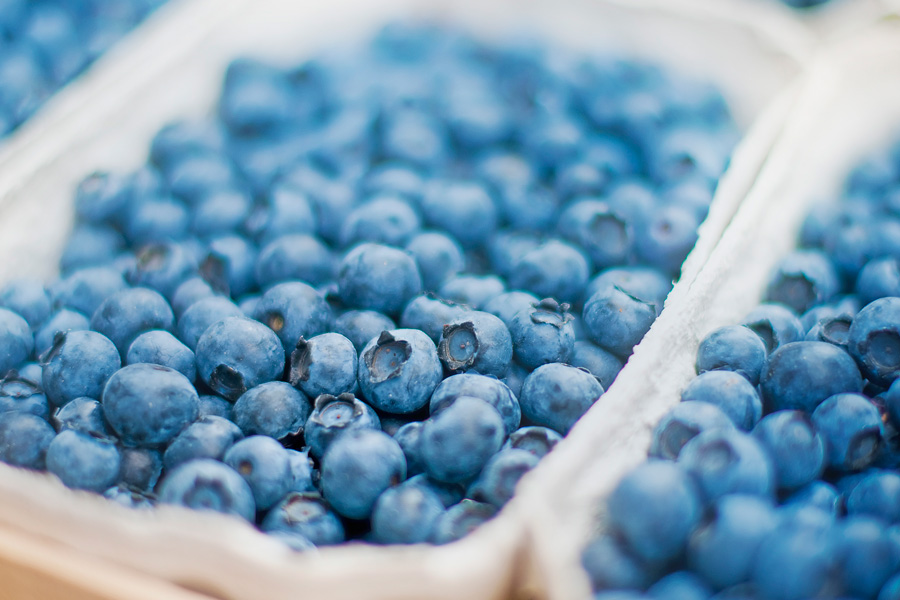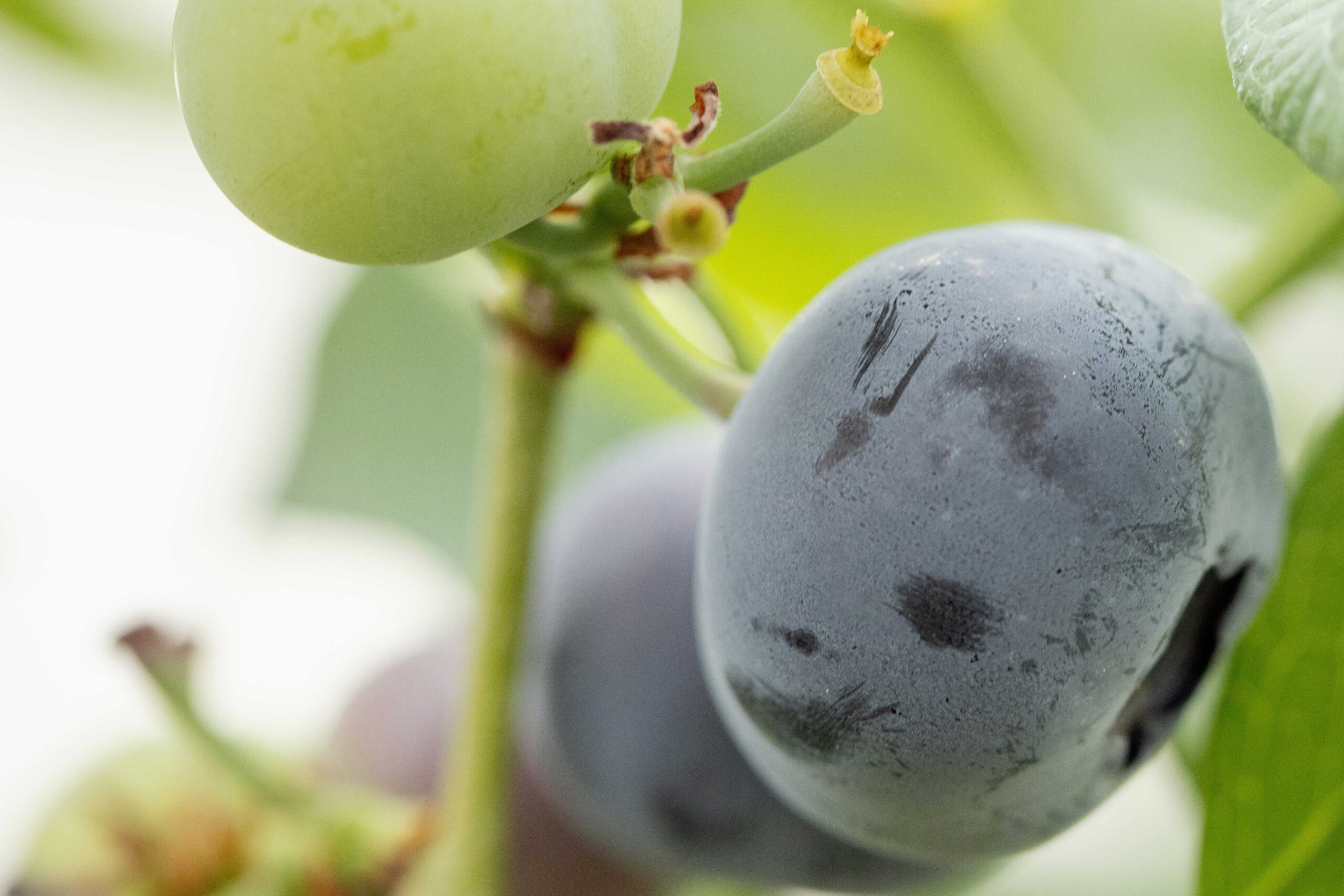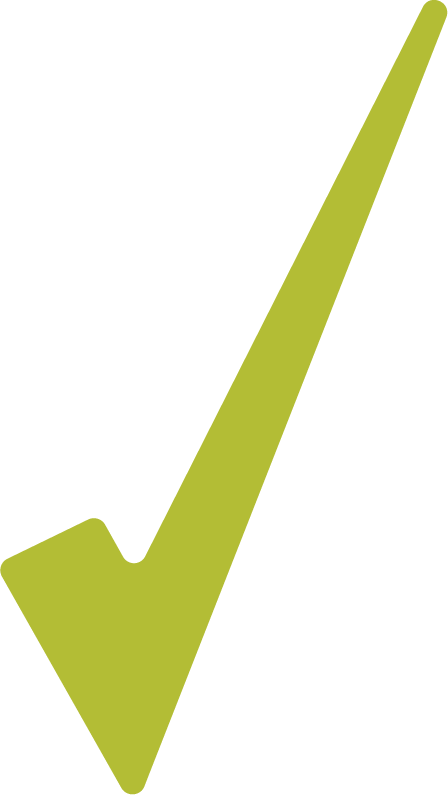Georgia growers harvested 45 million pounds of blueberries from over 20,000 acres in 2021, ranking 4th nationwide (National Agricultural Statistics Service, 2023). The main production areas are concentrated in the southeastern part of the state. South Georgia’s climate is characterized by mild winters, but spring freezes are common between March and April. These late freezes represent the main challenge for blueberry production in the state. Other weather-related events, such as warmer temperatures, high humidity, and precipitation during the harvest season, also can impact fruit quality. Additionally, warm weather conditions increase the risk of biotic stresses, such as phytophthora root rot and anthracnose fruit rot, which can compromise blueberry yields and fruit quality.
A brief survey was conducted during the annual blueberry update event hosted by the Bacon County UGA Extension office in January 2023. The objective of the survey was to document blueberry producers’ choice of varieties and disease concerns—this information would then be used to inform breeding priorities to develop new varieties adapted to the Southeast growing environment. Twenty-six Georgia blueberry growers from eight southeastern counties reported 3,238 total acres of blueberry plantings. Bacon and Pierce were the top two counties, accounting for 47% and 24% of the total reported acreage, respectively (Figure 1).
Results indicated that 26 blueberry varieties were planted in the reported acreage across the eight producing counties. Varieties that were planted on more than 5% of the total reported acreage are shown in Figure 2. ‘Farthing’ was the dominant variety (28% of reported acreage), followed by ‘Brightwell’ (22%). All other varieties were planted on less than 10% of the reported acreage.
Among these varieties, Southern highbush (‘Farthing’, ‘Legacy’, ‘Meadowlark’, ‘Suziblue’, ‘Star’, and ‘Optimus’) and rabbiteye (‘Brightwell’, ‘Premier’, and ‘Alapaha’) blueberries accounted for 61% and 39% of acreage, respectively.
Rabbiteye varieties typically exhibit higher vigor and contribute to longer orchard life because of their stronger root systems and enhanced tolerance to phytophthora root rot compared to southern highbush blueberries (Smith, 2012; Markus et al., 2018).
In addition, the flower and fruiting time of rabbiteye blueberries usually occurs later than southern highbush, which reduces the risk of early freeze damage and extends the Georgia fruiting season to mid-June. Because of this, frost protection is less common in commercial rabbiteye production. However, growers recently reported postharvest fruit-rot issues associated with rabbiteye blueberries (Oliver et al., 2021), and there is a need for new rabbiteye varieties with enhanced fruit quality, size, flavor, and yield to increase the profitability of late-season blueberry production.
Since 1940, the University of Georgia blueberry breeding program, in collaboration with the USDA, has made great progress in developing rabbiteye varieties, including ‘Brightwell’ and ‘Alapaha’. These varieties have increased fruit size, reduced seed size, closely synchronized ripening time, and long shelf life. However, the genetic base of rabbiteye breeding is narrow, tracing back to only four wild races (Lyrene, 1987). Rabbiteye blueberry (Vaccinium virgatum Ashei) is an outcrossing, hexaploid (2n = 6x = 72; in other words, there are two sets of chromosomes, one from each parent; and six sets of these chromosomes are present in each cell, for a total of 72 chromosomes per cell) species endemic to Georgia, Florida, and Alabama (Lyrene, 2005). To continue improving the quality of rabbiteye blueberries, our breeding program is working to broaden the genetic base of rabbiteye germplasm.
Southern highbush blueberries (Vaccinium spp.; 2n = 4x = 48) were created through interspecific hybridization of northern highbush (V. corymbosum L.; 2n = 4x = 48) and low-chilling diploid species (2n = 2x = 24), mainly V. darrowii (Draper & Hancock, 2003). The UGA breeding program started breeding southern highbush plants in the 1980s, and ‘Suziblue’ was a UGA variety released in 2010 (NeSmith, 2010). Georgia commercial acreage for southern highbush blueberries has increased significantly in the past decade because of many favorable traits, such as early ripening, large fruit size, high yield, and self-fertility. However, planting southern highbush requires high organic matter (Clark & Moore, 1991) and frost protection, which can significantly increase the cost of orchard establishment and operation. Early-season frosts are frequent in South Georgia and can cause significant or total yield loss of unprotected southern highbush orchards. Developing southern highbush varieties with delayed blooming time will reduce the risk of early frost damage.
In addition to reporting the varieties in production, surveyed growers provided rankings of eight blueberry diseases or pests based on their perception of disease impact (Figure 3). Phytophthora root rot was reported to have the highest impact, followed by anthracnose fruit rot, leaf rust, yeast rot, early stand loss, thrips, bud mites, and mummy berries. Phytophthora root rot disease (caused by Phytophthora cinnamomi Rands) in blueberries is prevalent in heavy soils (higher clay) with poor drainage. Infected plants suffer from root necrosis, leaf chlorosis, stunted growth, defoliation, and eventually death (Erb et al., 1987). ‘Legacy’ was reported to have disease resistance to phytophthora root rot (Yeo et al., 2016). Anthracnose fruit rot (caused by fungal pathogen Colletotrichum fioriniae) is a widespread disease across major blueberry production regions of North America. Disease resistance to anthracnose fruit rot was identified in several highbush varieties such as ‘Elliott’, ‘Brigitta’, and ‘Legacy’ (Miles & Hancock, 2022). Reports of genetic markers associated with anthracnose resistance (Jacobs et al., 2023) can be used to accelerate the development of resistant varieties adapted to the Southeastern growing environment.
In conclusion, UGA’s blueberry breeding program is collaborating with blueberry pathologists and entomologists to screen for disease resistance against these blueberry pathogens and pests among our breeding lines. Breeding efforts aim to not only improve fruit size, quality, and yield, but also resistance to early-season frost, disease, and pests for both southern highbush and rabbiteye varieties.
References
Clark, J. R., & Moore, J. N. (1991). Southern highbush blueberry response to mulch. HortTechnology, 1(1), 52–54. https://doi.org/10.21273/HORTTECH.1.1.52
Draper, A., & Hancock, J. (2003). Florida 4B: Native blueberry with exceptional breeding value. Journal of the American Pomological Society, 57(4), 138.
Erb, W. A., Moore, J. N., & Sterne, R. E. (1987). Response of blueberry cultivars to inoculation with Phytophthora cinnamomi Rands zoospores. HortScience, 22(2), 298–300. https://doi.org/10.21273/HORTSCI.22.2.298
Jacobs, M., Thompson, S., Platts, A. E., Body, M. J., Kelsey, A., Saad, A., Abeli, P., Teresi, S. J., Schilmiller, A., Beaudry, R., Feldmann, M. J., Knapp, S. J., Song, G., Miles, T., & Edger, P. P. (2023). Uncovering genetic and metabolite markers associated with resistance against anthracnose fruit rot in northern highbush blueberry. Horticulture Research, 10(10), uhad169. https://doi.org/10.1093/hr/uhad169
Lyrene, P. M. (1987). Breeding rabbiteye blueberries. Plant Breeding Reviews, 5, 307–357. https://doi.org/10.1002/9781118061022.ch8
Lyrene, P. M. (2005). Breeding low-chill blueberries and peaches for subtropical areas. HortScience, 40(7), 1947–1949. https://doi.org/10.21273/HORTSCI.40.7.1947
Makus, D. J., Spiers, J. M., Patten, K. D., & Neuendorff, E. W. (2018). Growth responses of southern highbush and rabbiteye blueberry cultivars at three southern locations. In Blueberries (pp. 73–82). Routledge. https://doi.org/10.1201/9781315138497-8
Miles, T. D., & Hancock, J. F. (2022). Inheritance of resistance to anthracnose fruit rot caused by Colletotrichum fioriniae in highbush blueberry. International Journal of Fruit Science, 22(1), 160–169. https://doi.org/10.1080/15538362.2021.2022567
NeSmith, D. S. (2010). ‘Suziblue’southern highbush blueberry. HortScience, 45(1), 142–143. https://doi.org/10.21273/HORTSCI.45.1.142
Oliver, J. E., Ali, E. (2021). Identifying post-harvest rots of Georgia blueberries and assessing pre-harvest fungicide applications for prevention of post-harvest diseases [White paper]. Small Fruits Consortium. https://smallfruits.org/files/2021/12/2021-R-13-Progress-Report.pdf
Smith, B. J. (2012). Survival of Southern Highbush blueberry cultivars in Phytophthora root rot-infested fields in south Mississippi. International Journal of Fruit Science, 12(1–3), 146–155. https://doi.org/10.1080/15538362.2011.619361
Yeo, J. R., Weiland, J. E., Sullivan, D. M., & Bryla, D. R. (2016). Susceptibility of highbush blueberry cultivars to phytophthora root rot. HortScience, 51(1), 74–78. https://doi.org/10.21273/HORTSCI.51.1.74









